All bright and poisonous
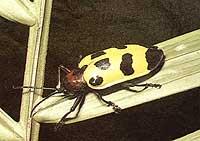
In a constant evolution between predator and prey, some species have developed ways to express their food displeasure. Many insects accumulate chemicals in their bodies for this purpose. Others, when attacked, secrete similar substances from the special glands. Sometimes the insect synthesizes these deceptive substances. Often insects get them from the plants they eat.
Other insects, such as bees, wasps and wasps, due to their painful puyas, do not like predators so much. Chemical defenses are not just insects: tropical toads and other types of toads produce the most potent biological toxins known. Very small doses stop the heart of the prey, paralyze it or in a few seconds are formed parts of your nervous system of great importance.
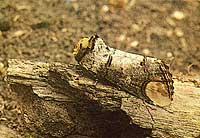
Some poisonous prey is hard to see. The Sits end, for example ( Phalera diver), is difficult to see: the birch branch camouflages to imitate.
What surprises us is that most harmful dams, without being difficult to see, try to become as visible as possible. Stripes of bright colors and red, yellow, white, purple and black dot, bright and with a spectacular trajectory. This is known as aposematic coloration or warning phenomenon. According to Darwin, if bad taste insects go from dark to bright coloration, inexperienced predators could see these mutants and eat more often.
It seems that the phenomenon of warning must fail as a defensive strategy.
This type of colouring has evolved into many different species. Therefore, you must have some advantage that compensates your degree of unprotection. Since the time of Darwin there have been many possible answers, but it seems that steps are currently being taken to choose the right ones.
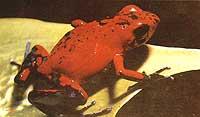
Naturalist Alfred Russel Wallace thought that perhaps a predator could learn much more easily to avoid a poisonous prey if harmful matter was related to vivid colors. If you play a flashing red light and receive an electric shock, you may remember playing that experience (the same discharge) on a dark gray disk much better than if you pick it up.
Apart from what Wallace said, there is another alternative hypothesis. An inexperienced predator can attack the predator of vivid colors much more often than the one of dark colors, and thus learn faster to discard the first class. According to this argument, predators learn faster to discard colourful prey. Not because each experience is more effective, but because those experiences occur in a short space of time.
At the University of Sussex, Paul Harvey and his colleagues put the chickens in a closure and threw pieces of bad taste food. The researchers tinted half of the food with the same colors as the pavement, making it almost invisible. The other half of the food contrasted with the pavement, making it visible. At the beginning of a test, the chites ate more of the visible food. Soon they learned not to peck this type of food.
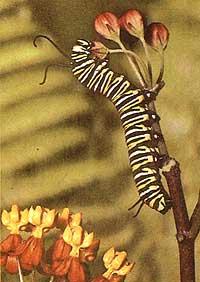
On the contrary, at first they rarely ate almost invisible food. But thanks to their long experience they never learned to banish food that was not striking. With these results we conclude that with the administration of dams of the same flavor, chites (when starting to feed) learn faster and better when it comes to finding the harmful prey.
Randomly, this trial does not deny the alternative hypothesis, that is, it helps to learn to rule out striking colorations more quickly.
To demonstrate this, researchers must organize things so that, at first, an unscrupulous predator can attack predators of striking colors in the same proportion. Tim Roper and his colleagues, after several attempts with the Chits, learn faster to discard pieces of bad taste food if the food has an intense color. In addition, chickens remember with brightly colored food for longer. It seems that Wallace was right.
Coloring can influence the time birds need to learn to reject unpleasant food and the time they remember that pecking.
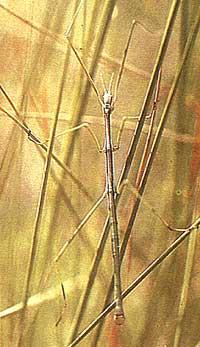
This coloring can have other advantages. John Turner of the University of Leeds believes that striking coloration is not important because it makes the dam striking, but because it makes it different. According to him, this innovation facilitates the predator to associate the aspect of the prey with harmful elements. There are at least two reasons that drive this idea: it is easier to learn a striking stimulus, which makes the dam appear as a new element.
Something else needs to be mentioned to end this issue. There are birds that do not need to learn how to rule out insects with bright colors. They are discriminated against by themselves. This is evident in the trials conducted by Werner Schuler and Elke Hesse at the University of Götingen.
The presence of lines does not increase the tendency to spontaneous marginalization of some.
And why do insects have a striking striped coloring? Perhaps the lines act as camouflage and striking coloration. Looking further, the stripes can clear the outline of the dam and make it difficult to see (zebras, for example). Looking closely, the lines make the dam visible.
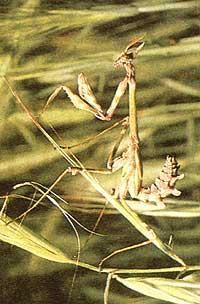
The evolution of the spontaneous abandonment of prey by some predators marks the trials that will take place from now on in the case of the gap between prey and prey. Brightly colored insects can stop flowing toxins or harmless insects can protect themselves by adopting a bright coloration. Some predators have developed ways to avoid the toxins of some animals by changing their physiology or behavior. For example, hives avoid bites before eating bees. Here the striking colouring has no advantage, since that coloration makes the dam visible.
Nature lovers have been interested for centuries in the coloring of animals. The new models of evolution have generated new questions about the colors of animals. Research on animal coloring provides the meeting point between science and aesthetics.
Buletina
Bidali zure helbide elektronikoa eta jaso asteroko buletina zure sarrera-ontzian











